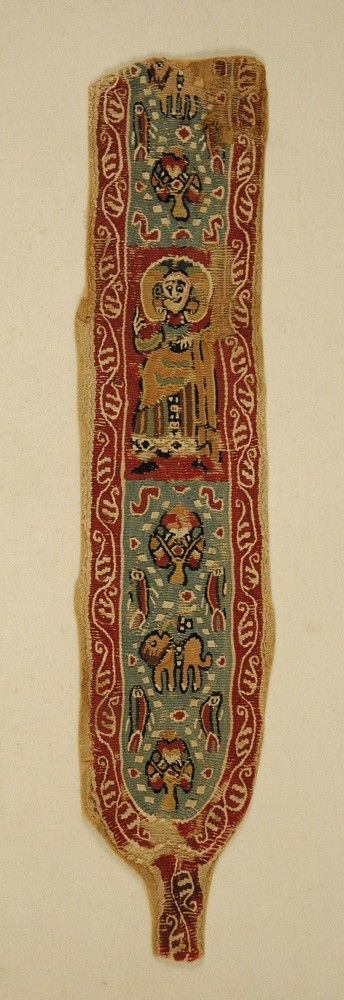Band from a chiton (00491)

Exhibition room: I.5 Christian Egypt and Coptic art
Date: 6th - 8th c.
Dimensions (cm): 41Χ8
The polychrome, woven band was part of the decoration on a chiton. Usually a linen chiton had bands sewn in a vertical arrangement on front and back as well as towards the ends of the sleeves. These bands were sometimes decorated with purely geometric patterns and sometimes had depictions with human figures, animals and plants. In this case the depictions are divided into three sections. In the middle one a male figure, perhaps (as he has a large halo round his head) representing a saint, is depicted standing. The other two sections depict, in highly stylized form: a four-legged animal, two trees and fish with S-shaped symbols in between which may indicate the element of water. It is probably meant to be a schematic depiction of a river scene with aquatic animal life. Such scenes, inherited from Hellenistic art and very common in the Early Christian centuries (4th-8th c.), decorate pavements, walls and even minor art objects. The linear and stylized execution of this object leads to a dating between the 6th and the 8th centuries.








